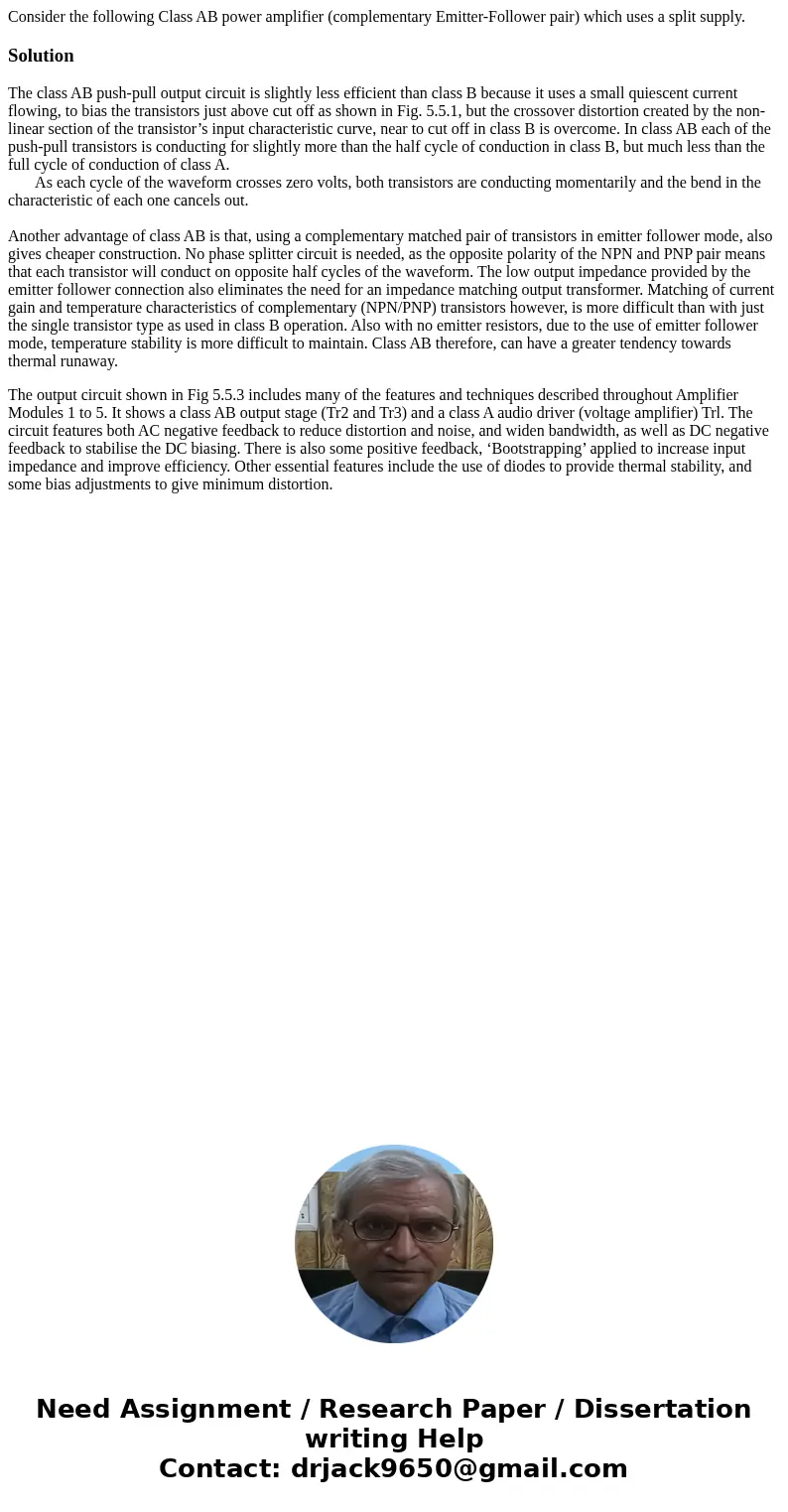Consider the following Class AB power amplifier complementar
Solution
The class AB push-pull output circuit is slightly less efficient than class B because it uses a small quiescent current flowing, to bias the transistors just above cut off as shown in Fig. 5.5.1, but the crossover distortion created by the non-linear section of the transistor’s input characteristic curve, near to cut off in class B is overcome. In class AB each of the push-pull transistors is conducting for slightly more than the half cycle of conduction in class B, but much less than the full cycle of conduction of class A.
As each cycle of the waveform crosses zero volts, both transistors are conducting momentarily and the bend in the characteristic of each one cancels out.
Another advantage of class AB is that, using a complementary matched pair of transistors in emitter follower mode, also gives cheaper construction. No phase splitter circuit is needed, as the opposite polarity of the NPN and PNP pair means that each transistor will conduct on opposite half cycles of the waveform. The low output impedance provided by the emitter follower connection also eliminates the need for an impedance matching output transformer. Matching of current gain and temperature characteristics of complementary (NPN/PNP) transistors however, is more difficult than with just the single transistor type as used in class B operation. Also with no emitter resistors, due to the use of emitter follower mode, temperature stability is more difficult to maintain. Class AB therefore, can have a greater tendency towards thermal runaway.
The output circuit shown in Fig 5.5.3 includes many of the features and techniques described throughout Amplifier Modules 1 to 5. It shows a class AB output stage (Tr2 and Tr3) and a class A audio driver (voltage amplifier) Trl. The circuit features both AC negative feedback to reduce distortion and noise, and widen bandwidth, as well as DC negative feedback to stabilise the DC biasing. There is also some positive feedback, ‘Bootstrapping’ applied to increase input impedance and improve efficiency. Other essential features include the use of diodes to provide thermal stability, and some bias adjustments to give minimum distortion.

 Homework Sourse
Homework Sourse